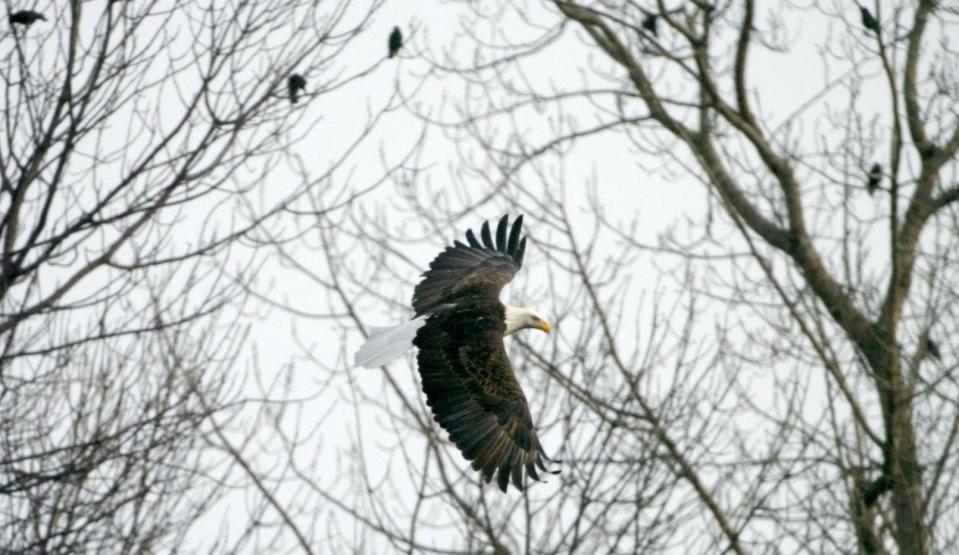2 bald eagles in Vermont found infected with avian influenza near Lake Champlain
MONTPELIER — Two bald eagles in the state were found to be infected with avian influenza, the Vermont Department of Fish and Wildlife says.
One of the birds was found dead in South Hero and the other was discovered ill in Shelburne. Both birds were near Lake Champlain.
With the discovery, Vermont joined 33 other states that have detected highly pathogenic avian influenza in the environment, the state says.
More: Avian flu has been detected in North America. Tips for Vermonters who own or hunt birds.
While some waterfowl species can carry the disease without becoming sick, the virus is generally fatal for domestic poultry.

The state says anyone involved with poultry production, from the small backyard coop to large commercial producers, should review their biosecurity measures.
The Centers for Disease Control and Prevention considers the risk to the general public from the virus to be low, but the virus can be deadly to domestic and commercial poultry and backyard birds.
The virus is often introduced to domestic poultry by infected wild birds through direct contact or contact with their droppings. It may spread between poultry flocks.
Human movement onto farms should be limited and non-essential personnel and visitors should not be allowed.
This article originally appeared on Burlington Free Press: 2 bald eagles in Vermont found infected with avian influenza

